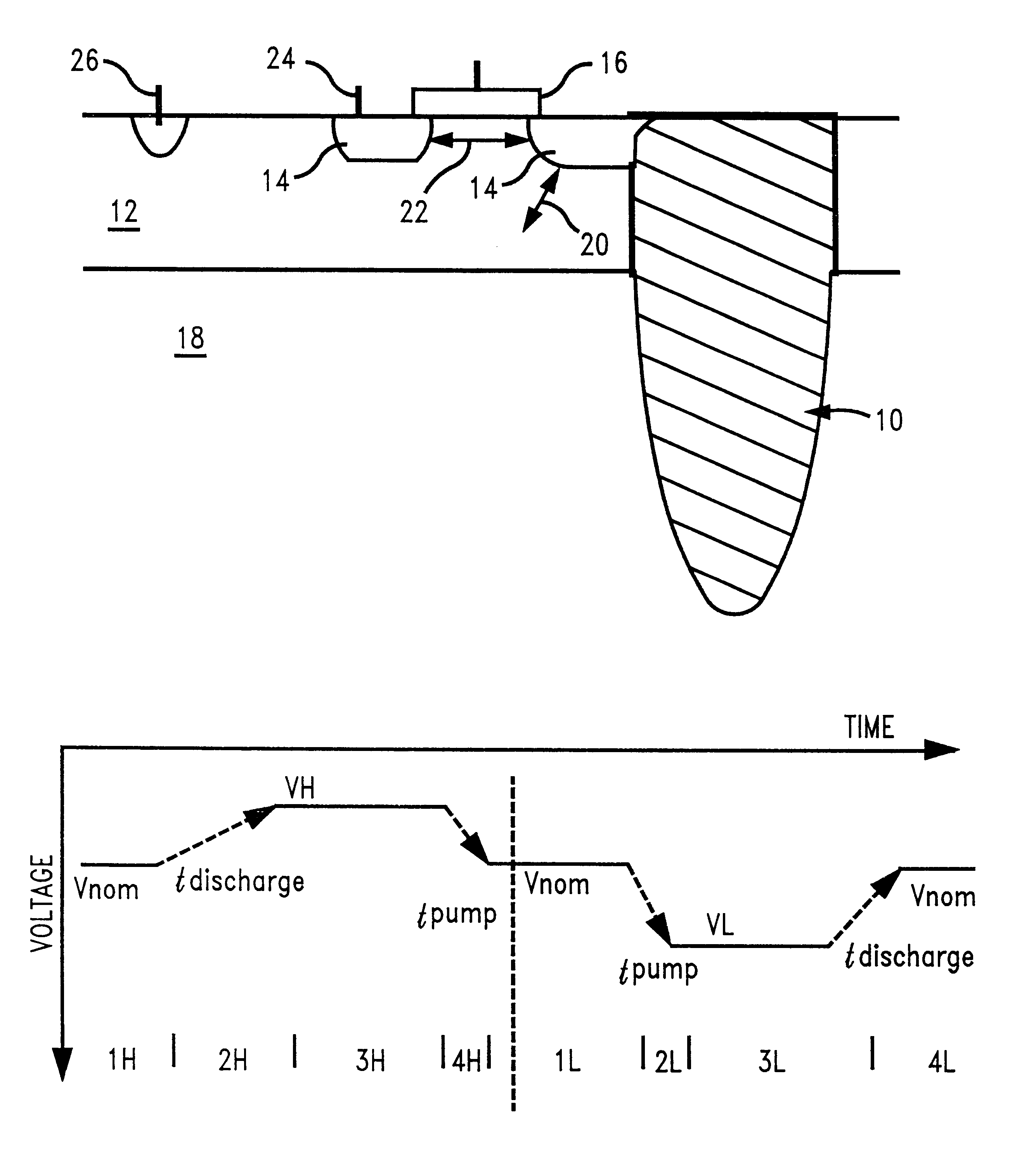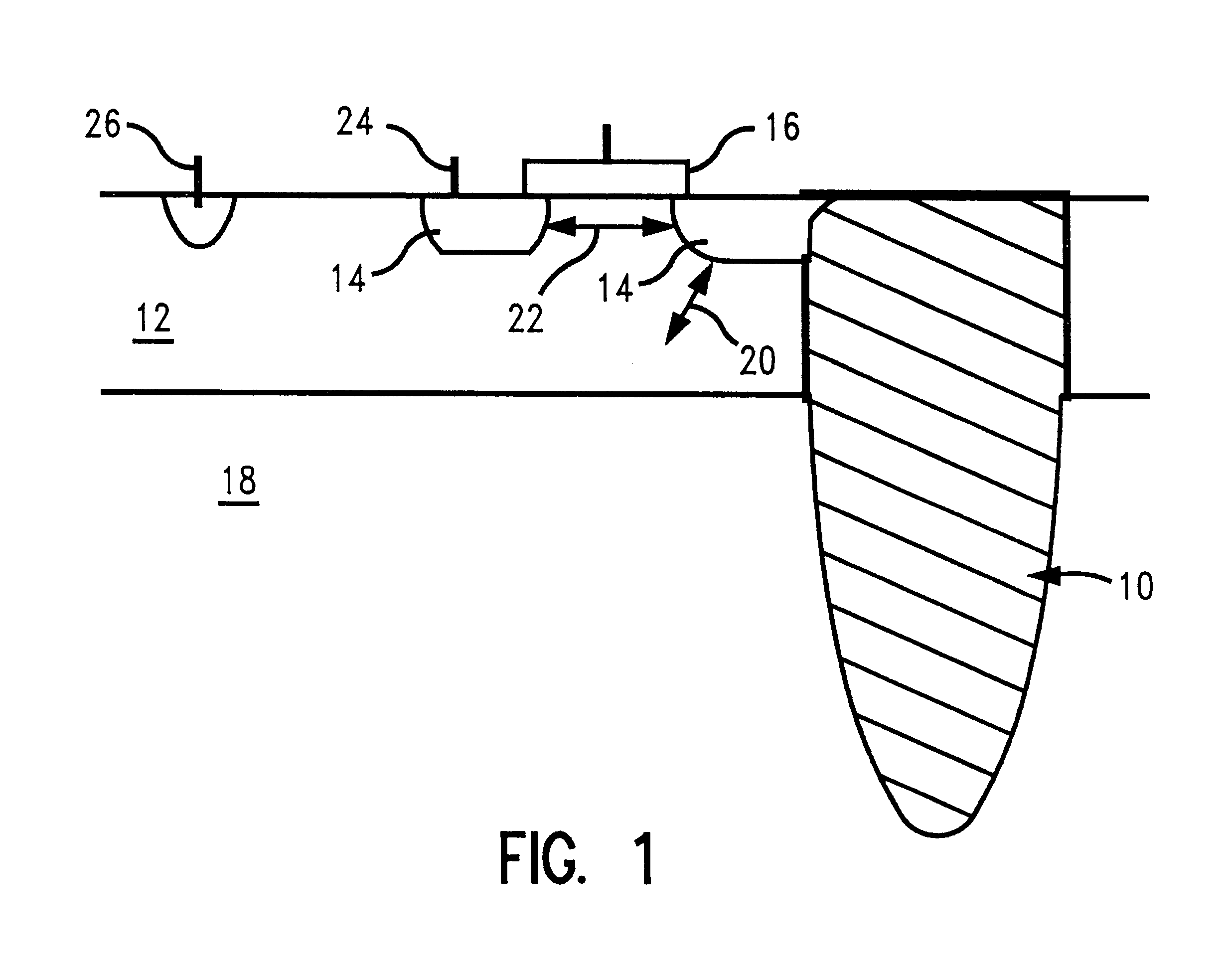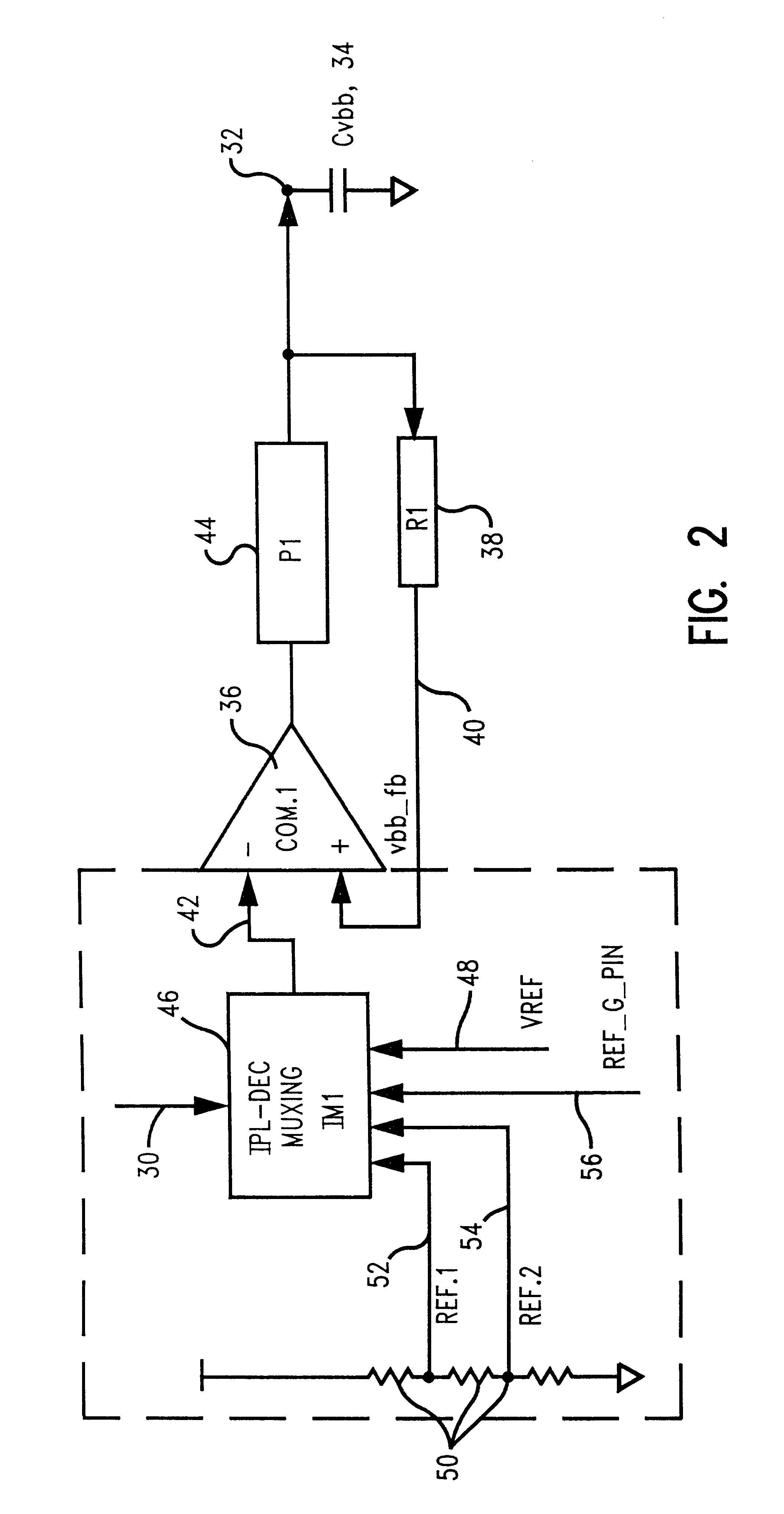Apparatus and method for performing a defect leakage screen test for memory devices
a defect leakage and memory device technology, applied in semiconductor/solid-state device testing/measurement, instruments, transistors, etc., can solve problems such as potential reliability problems, cell weakness, and time-consuming process, and the ability to characterize retention related single bit failures remains
- Summary
- Abstract
- Description
- Claims
- Application Information
AI Technical Summary
Problems solved by technology
Method used
Image
Examples
Embodiment Construction
)
In describing the preferred embodiment of the present invention, reference will be made herein to FIGS. 2-7 of the drawings in which like numerals refer to like features of the invention. Features of the invention are not necessarily shown to scale in the drawings.
A Defect Leakage Screen Test apparatus is introduced to eliminate or reduce steps in the failure analysis process of memory devices, such as DRAM cells, or to eliminate the necessity of a Physical Failure Analysis (PFA) in its entirety. The introduced test procedure is aimed to characterize special single bit failures due to leakage current, junction leakage current, or sub-threshold leakage current. Importantly, this test method can be applied at the package level. The test method employs a test mode initial program load (IPL) variation of the cell transfer device back-bias voltage or p-well voltage (v.sub.bb). The ability to vary v.sub.bb makes it possible to identify which type of leakage is likely causing a cell to be...
PUM
 Login to View More
Login to View More Abstract
Description
Claims
Application Information
 Login to View More
Login to View More - R&D
- Intellectual Property
- Life Sciences
- Materials
- Tech Scout
- Unparalleled Data Quality
- Higher Quality Content
- 60% Fewer Hallucinations
Browse by: Latest US Patents, China's latest patents, Technical Efficacy Thesaurus, Application Domain, Technology Topic, Popular Technical Reports.
© 2025 PatSnap. All rights reserved.Legal|Privacy policy|Modern Slavery Act Transparency Statement|Sitemap|About US| Contact US: help@patsnap.com



